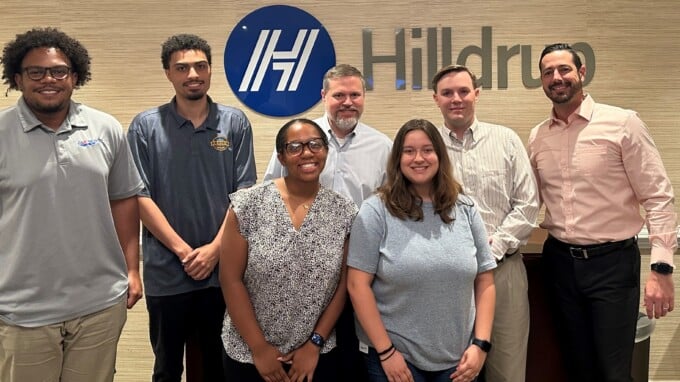Celebrating 10 Years of Moving Trends, Advice and Perspectives
We've accomplished a lot and learned a lot over the past 10 years since our Hilldrup blog was created. Let's look back on some insights and the many changes we've seen in our industry!

The Hilldrup blog is 10 years old! We’ve covered a lot of topics over the past decade, and while some moving advice remains the same (start early!), events like the pandemic have undeniably changed our business and the lives of our customers.
To commemorate the blog’s anniversary, we wanted to have leaders across our different business lines – and our own HR team – share their thoughts on the biggest changes they’ve seen in 10 years, and where they think their respective areas will go in the next decade.
The following Q&A features:
- Onie Girton, CRP, GMS, Senior Vice President, Sales and Client Services (Corporate Relocation)
- John Warlick, Executive Vice President and Managing Director (International Relocation)
- George Roth, Enterprise Vice President, Residential Sales & Customer Experience (Residential Moving)
- Justin Mahon, Vice President, Workplace Solutions (Commercial Relocation and Workplace Solutions)
- Remus Boxley, Senior Vice President, Human Resources (Hilldrup HR)
What Are the Biggest Changes You’ve Seen In Your Space Over the Past 10 Years?
Girton/Corporate Relocation: Ten years seems like a lifetime ago after the past two years! Technology has transformed the workplace and how we perform daily activities. Relocations were necessary due to the need to be in proximity to your team. Now, with Zoom and Teams, that has all changed. Benefit packages have evolved as well, becoming more employee-focused/centric, especially as talent acquisition challenges have reached an all-time high.
Warlick/International Relocation: International assignments have always been considered unique career advancement opportunities for employees working for multinational corporations, the government and diplomatic community, and global organizations. While this is still the case, international relocation program allowances have shifted to smaller entitlements and shorter assignment times. When determining the success or failure of an international assignment, compliance, security, employee well-being, and ultimately, the return on investment, have been some of the biggest areas of focus over the past decade.
Roth/Residential Moving: The biggest change with residential moving over the past 10 years has been how much can be done virtually, especially as it relates to our work. All of our move surveys are done virtually now, which allows us to operate more efficiently and enables us to better meet our customers desired survey times. The team is thriving in our new virtual environment and our customers love it.
Mahon/Workplace Solutions: Office moves have gotten smaller in scale. Ten years ago, offices had so much more paperwork and files, and in general, substantially more furniture than they do today. Today’s customers need more solutions than just a service provider and expect a quicker response time with today’s technology.
Boxley/HR: Talent demands have been on the rise this past decade, something that’s really been accentuated by the pandemic. Developing a strategic plan for being an Employer of Choice (focusing on recognition/rewards, training/development and relevant employee benefits) has become critical. So has fostering an organizational culture that stays ahead of employees’ needs and is one rooted in clear, transparent communication, utilizing a variety of technologies to stay connected with everyone.
Where Do You See Your Business Line Going in the Next Decade? What Will Be the Biggest Trends/Opportunities/Challenges Impacting Your Respective Space?
Girton/Corporate Relocation: The need for good talent will never go away, and businesses recognize the value to relocate key positions. Technology is going to continue evolving, being central to improving efficiencies, as well as the customer experience. The pandemic, and the subsequent supply chain crisis, has made organizations realize the importance of choosing companies to work with based on their financial stability and quality. This is why Hilldrup has been so successful in the relocation space, and will continue to do so, by always reinvesting in our most important asset, our people.
Warlick/International Relocation: Over the past (almost) two years, we have seen how a global pandemic can significantly impact global mobility. Technology advancements have allowed for greater connectivity among global teams and have made it possible for employees to manage more of their own relocation (lump sum programs) with less employer assistance. As both technology and virtual work evolve and change the way in which we conduct business around the world, I suspect we’ll continue seeing a shift to shorter international assignments.
Roth/Residential Moving: As we navigate through the pandemic and more and more people are working from home, it will be interesting to see the long-term impact on people’s residential moving habits. Many companies are letting employees work from anywhere, so opportunities may exist if someone wants to move to a desired location away from their job. On the flip side, not as many people are required to relocate for their work, which could hamper residential moves for the foreseeable future.
Mahon/Workplace Solutions: Like everyone else, I wish I had a crystal ball to see how the post-COVID world, if that even exists, impacts the office environment. A company’s culture will play a huge role on what they decide to do short term and long term with their space utilization, but I expect many to make some kind of change concerning their office space needs – recognizing that yesterday’s problems won’t be solved with yesterday’s solutions. I also can see more acquisition opportunities because of present labor shortages throughout the current economic landscape.
Boxley/HR: There’s going to be a constant need to evaluate and re-evaluate flexible work arrangements to attract and retain top talent across the country. But even with a wider candidate pool, companies also will need to put a greater focus on developing an internal pipeline of talent to create even more opportunities for employees to be promoted, as well as efforts to create a truly diverse workforce – one that is representative of their current and future client populations.
Suffice it to say, the past 10 years have seen tremendous change, challenges, and opportunities. It’s been a privilege to move thousands of individuals, families and businesses across the world during this time, and we look forward to continuing these partnerships over the next decade and beyond!


